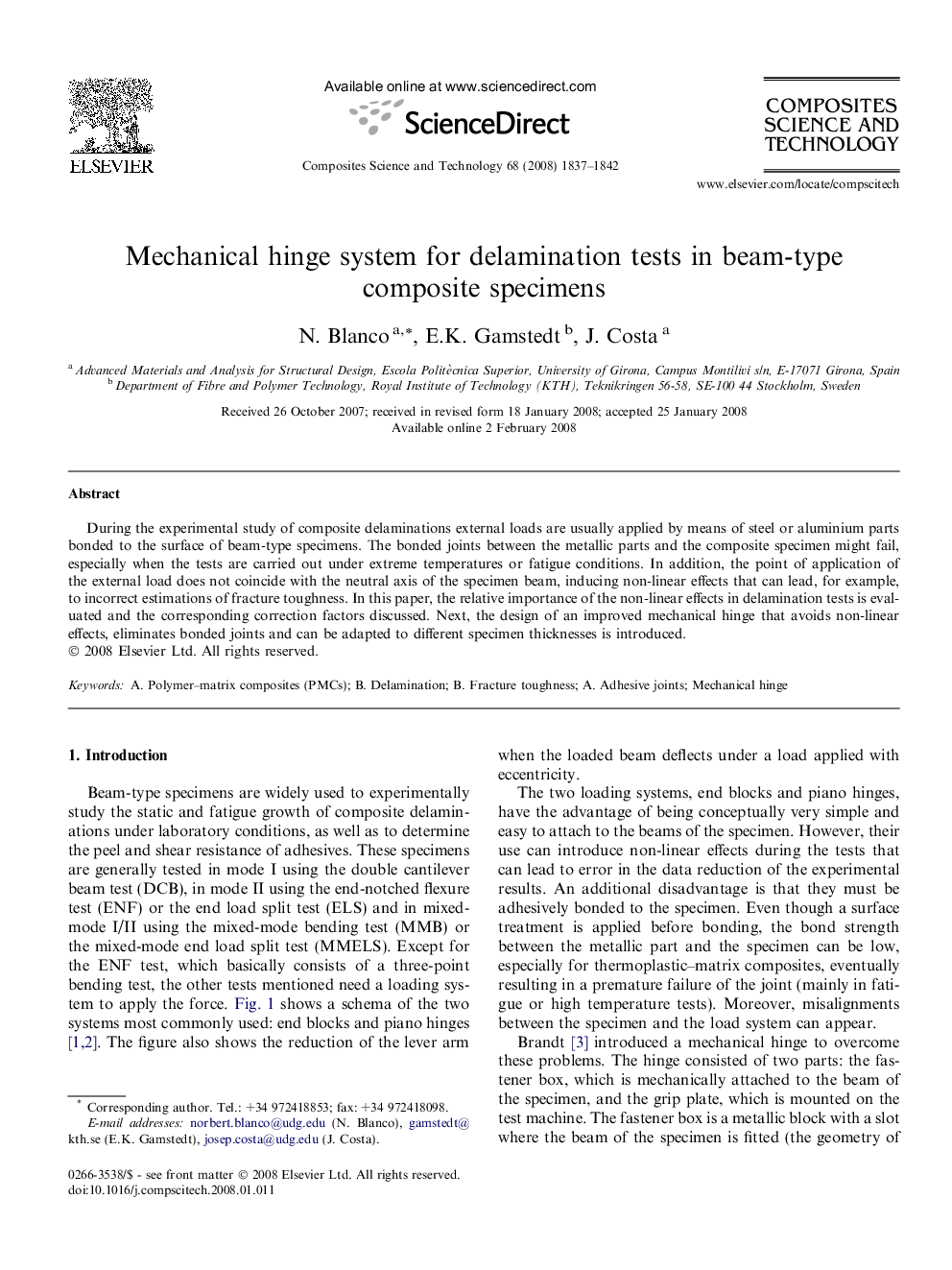| Article ID | Journal | Published Year | Pages | File Type |
|---|---|---|---|---|
| 822232 | Composites Science and Technology | 2008 | 6 Pages |
During the experimental study of composite delaminations external loads are usually applied by means of steel or aluminium parts bonded to the surface of beam-type specimens. The bonded joints between the metallic parts and the composite specimen might fail, especially when the tests are carried out under extreme temperatures or fatigue conditions. In addition, the point of application of the external load does not coincide with the neutral axis of the specimen beam, inducing non-linear effects that can lead, for example, to incorrect estimations of fracture toughness. In this paper, the relative importance of the non-linear effects in delamination tests is evaluated and the corresponding correction factors discussed. Next, the design of an improved mechanical hinge that avoids non-linear effects, eliminates bonded joints and can be adapted to different specimen thicknesses is introduced.
